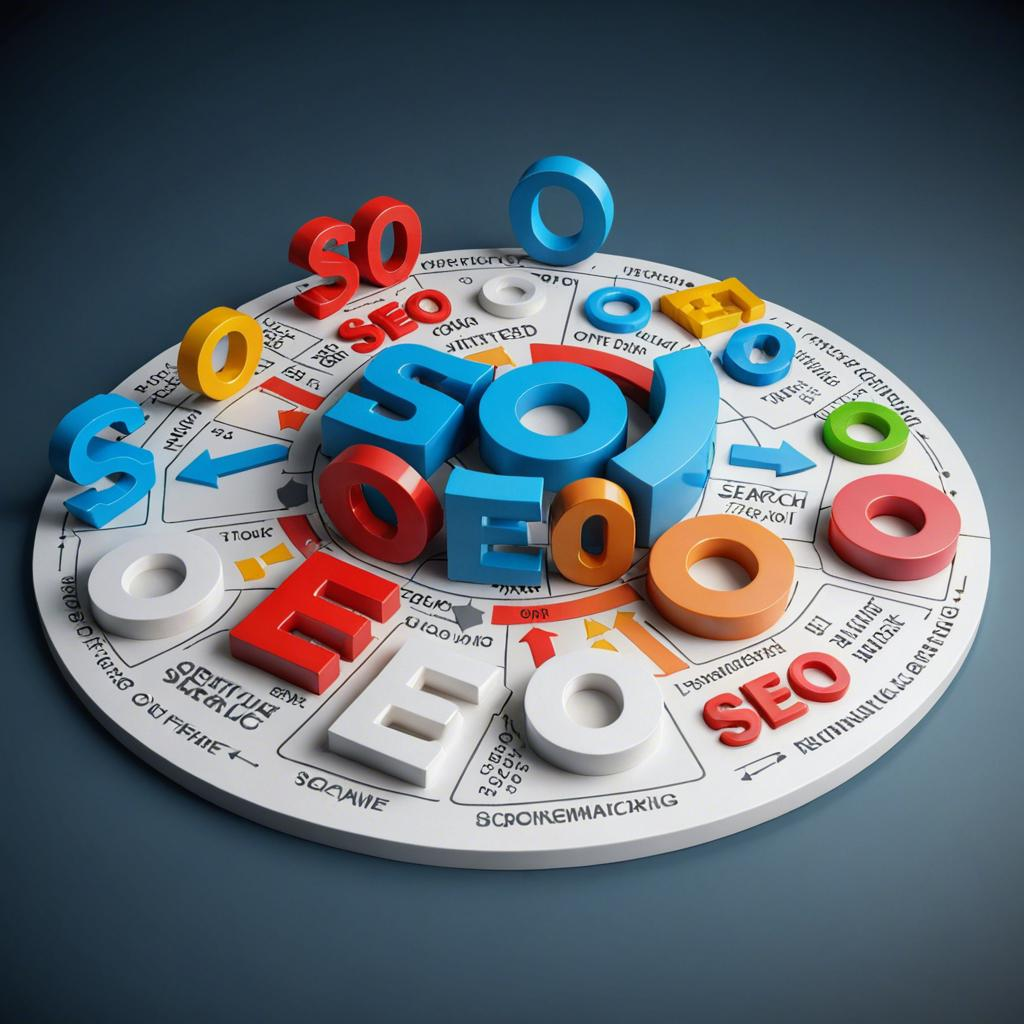RFID Tags in Water Management: Enhancing Resource Monitoring in 2025
“RFID Tags for Water Management in 2025: Long-range, Waterproof, Low-power, Durable, High-capacity, Multi-frequency, EPC, Temperature, Pressure, Level, AI, Blockchain, Software, ERP, SEO-optimized, Encrypted, Real-time, Customizable, Interoperable, and Scalable Solutions for Remote Water Resource Monitoring and Management”
Introduction
RFID tags for water management are essential tools for monitoring and managing water resources effectively. These advanced tags come with numerous features designed to meet the unique demands of water management applications. They offer long-range capabilities for remote monitoring and management, waterproof designs for harsh environments, and low power consumption for extended battery life. RFID tags for water management also feature durability, high data storage capacity, multiple frequency support, EPC technology for identification, temperature and pressure sensors, level sensors, AI capabilities, blockchain integration, software and ERP compatibility, SEO optimization, encryption, real-time monitoring, customizability, interoperability, and scalability. With these features, water management organizations can optimize their operations, ensure water quality and security, and respond quickly to issues, ultimately leading to more efficient and sustainable water management.
1. Long-range capabilities: RFID tags for water management should have long-range capabilities to enable remote monitoring and management of water resources.
In the future water management landscape, RFID tags will play a crucial role in remotely monitoring and managing water resources. To effectively address the challenges of water scarcity and wastage, RFID tags for water management should be equipped with long-range capabilities. This feature enables real-time monitoring of water levels in reservoirs, canals, and other water bodies from a distance. With long-rangeRFID UHF tags, water management agencies can deployRFID readersor scanners in strategic locations to capture data and transmit it to central systems for analysis. These systems can then provide actionable insights and recommendations to optimize water usage and prevent wastage. For instance, in Chennai, a city in India prone to water shortages, long-rangeRFID UHF tagsinstalled in reservoirs could help authorities monitor water levels and take proactive measures to manage water resources more efficiently.
2. Waterproof design: The tags should be waterproof to withstand various weather conditions and water environments.
In RFID technology’s application in water management, the importance of waterproofRFID UHF tagscannot be overstated. These tags are designed to withstand various weather conditions and water environments, ensuring reliable data transmission in real-time. TheRFID UHF tagsused in water management systems are typically submerged in water for extended periods, making waterproofing a crucial feature. This technology is not limited to large-scale water management projects but can also be used in smaller applications such as monitoring irrigation systems in agriculture.
TheRFID UHF tags‘ waterproof design enables efficient monitoring of water resources in cities like Chennai, Mumbai, or Delhi, where water scarcity is a significant concern. TheRFID UHF tags‘ data can be accessed usingRFID UHF readersor scanners, which can be integrated with mobile apps, AI, or blockchain development for enhanced data analysis and decision-making. TheRFID UHF tags‘ waterproof design also ensures their longevity, reducing the need for frequent replacement, making them a cost-effective solution for water resource management.
3. Low power consumption: RFID tags should have low power consumption to ensure long battery life and reduce the need for frequent battery replacement.
In RFID technology, low power consumption is a crucial factor for RFID tags used in water management applications in 2025. By minimizing power usage, the tags can ensure extended battery life and reduce the frequency of battery replacements, which is essential in remote or hard-to-reach locations. This is particularly important when dealing with large-scale water distribution networks or water treatment plants, where frequent maintenance and battery replacement can be logistically challenging and costly. Moreover, the low power consumption of RFID tags enables the deployment of more sensors throughout the network, leading to more comprehensive and accurate monitoring of water resources. In cities like Chennai or Mumbai, where water scarcity is a significant issue, the implementation of RFID-enabled water management systems with low-power tags can significantly enhance resource monitoring and efficiency.
4. Durability: RFID tags should be rugged and durable to withstand harsh conditions in water management applications.
In water management applications, RFID tags play a crucial role in monitoring and managing resources efficiently. However, the harsh conditions, such as water, humidity, and extreme temperatures, can pose significant challenges to the durability of RFID tags. To address these challenges, RFID tags designed for water management applications must be rugged and durable.
RFID UHF tags, with their long-range capabilities, are particularly suitable for water management applications. These tags can withstand harsh conditions, including immersion in water, making them ideal for monitoring water levels, managing irrigation systems, and tracking assets in water treatment plants. The tags are designed to resist water, humidity, and extreme temperatures, ensuring reliable performance even in challenging environments.
Moreover,RFID readersor scanners used in water management applications must also be rugged and durable to function effectively in harsh conditions. These readers are often deployed in remote locations and require minimal maintenance, making durability a critical factor in their design.
In the future, the integration of advanced technologies such as AI, blockchain, and ERP systems with RFID tags in water management applications will further enhance resource monitoring and management. For instance, AI algorithms can analyze data from RFID tags to predict water usage patterns and optimize irrigation systems. Blockchain technology can ensure data security and transparency, while ERP systems can streamline operations and improve overall efficiency.
For instance, in a water treatment plant in Chennai, India,RFID UHF tagsare used to monitor water levels in reservoirs and manage the irrigation system. The tags are deployed in a rugged and durable housing, ensuring reliable performance even in extreme temperatures and humidity. The data collected by the tags is transmitted to an AI system, which analyzes the data to optimize water usage and predict future water usage patterns. The integration of RFID tags with AI and ERP systems has significantly improved the efficiency and effectiveness of the water management system in the plant.
5. High data storage capacity: Tags should have a large data storage capacity to store detailed information about water levels, quality, and other relevant data.
In RFID technology’s application to water management in 2025, high data storage capacity is a crucial factor for RFID tags. With the ability to store extensive information, these tags can record and transmit detailed data about water levels, quality, and other vital statistics.RFID UHF tags, for instance, can store up to 8 kilobytes of data, which is ample for recording complex data sets. This feature is particularly beneficial for large-scale water management systems in metropolises like Chennai or Mumbai, where accurate and timely data is essential for efficient resource allocation and regulatory compliance. The integration of AI, blockchain, and ERP systems with RFID technology further amplifies the importance of high data storage capacity in RFID tags. These advanced technologies rely on vast amounts of data to function effectively, and RFID tags serve as the foundation for this data infrastructure.
6. Multiple frequency support: RFID tags should support multiple frequencies to ensure compatibility with differentRFID readersand systems.
In RFID technology’s application in water management, multiple frequency support becomes a crucial requirement for RFID tags. With the increasing adoption of RFID technology in various industries, the proliferation ofRFID readersand systems operating on different frequencies poses a challenge. RFID tags that support multiple frequencies ensure compatibility with diverse RFID infrastructures. This interoperability is essential to enable seamless data exchange between various stakeholders involved in water management.
For instance,RFID UHF tags, popular for their long-range capabilities, are widely used in large-scale water management projects. However, there may be instances whereRFID readersoperating on other frequencies, such asRFID fixed readers or handheldRFID readers, need to access data from these tags. In such cases, having RFID tags that support multiple frequencies would prevent the need for reissuing new tags or upgrading the entire RFID infrastructure.
Moreover, the use of RFID tags in water management extends to various applications, including tagging water meters, monitoring water quality sensors, and tracking water tank levels. To cater to the diverse requirements of these applications, RFID tags that support multiple frequencies would provide a more flexible and future-proof solution.
In the context of water management, RFID tags’ ability to support multiple frequencies would enhance the overall efficiency and effectiveness of the system. This feature would enable water management agencies to leverage the latest RFID technologies and maintain compatibility with existing infrastructure, thereby ensuring a smooth transition and minimizing the need for frequent upgrades.
For instance, in a city like Chennai, where there is a significant demand for water management solutions, RFID tags that support multiple frequencies would be beneficial for various water management applications, such as monitoring water tank levels, tracking water quality sensors, and managing water distribution networks. This would ensure that the RFID infrastructure remains adaptable to the evolving needs of the industry and the city.
7. EPC (Electronic Product Code) technology: Tags should use EPC technology for unique identification and tracking of water resources.
In RFID technology’s ongoing evolution, EPC (Electronic Product Code) technology has emerged as a game-changer in water management. By 2025, RFID tags incorporating EPC technology will be the norm for unique identification and tracking of water resources. These advanced tags will offer superior reading ranges, enabling efficient monitoring of vast water networks.RFID UHF tags, a popular choice due to their long-range capabilities, will play a significant role in this development. With EPC technology, each tag will carry a unique identifier, ensuring accurate tracking and management of water resources. This innovation, coupled with the integration of mobile apps, AI, and blockchain technology, will revolutionize the water management sector. For instance, in Chennai,RFID UHF tagsintegrated into the city’s water distribution system could help prevent water wastage and theft, leading to substantial savings and improved resource management.
8. Temperature sensors: Tags should have temperature sensors to monitor water temperature and ensure optimal water quality.
In RFID technology’s application in water management by 2025, temperature sensors are an essential addition to RFID tags. These sensors enable real-time monitoring of water temperature and ensure optimal water quality. With the integration of AI and machine learning algorithms, temperature data can be analyzed to identify anomalies, predict potential issues, and automate corrective actions. TheRFID UHF tags, with their long-range capabilities, are ideal for large water treatment plants and reservoirs in cities like Chennai or Mumbai. These tags can be attached to various infrastructure components, including pipes, valves, and pumps, to monitor their temperature and condition continuously. By automating temperature monitoring and analysis, water management systems can prevent overheating or freezing, reducing energy consumption and maintenance costs while ensuring consistent water quality.
9. Pressure sensors: Tags should have pressure sensors to monitor water pressure and detect leaks or other issues.
In RFID technology’s application in water management, pressure sensors integrated into RFID tags play a crucial role in ensuring optimal water resource utilization and preventing potential issues. These sensors monitor water pressure in real-time, detecting any anomalies, leaks, or malfunctions in the system. By integrating this functionality into RFID tags, water management systems can proactively address problems, reducing water wastage and minimizing maintenance costs. The implementation of such smart water management systems can significantly benefit cities worldwide, such asNew Yorkor Mumbai, in ensuring a sustainable water supply and maintaining infrastructure efficiency. These advanced RFID tags can be developed byERP development companies,software development companies, orAI development companies, enhancing their portfolio and contributing to innovative water management solutions in 2025.
10. Level sensors: Tags should have level sensors to monitor water levels in reservoirs, tanks, and other water structures.
In RFID technology’s continuous evolution, level sensors on RFID tags will become a standard feature in water management applications by 2025. These advanced RFID tags, integrated with level sensors, will be deployed in various water structures such as reservoirs, tanks, and water treatment facilities across cities like Chennai, India, andParis,France. TheRFID readersor scanners will be strategically positioned to capture tag data and transmit it to the cloud-based monitoring system in real-time. TheAI development companiesandsoftware development companieswill leverage this data to analyze water levels, identify trends, and predict potential issues, ensuring optimal water resource management. The integration of RFID technology with level sensors will revolutionize water management, providing an accurate, efficient, and cost-effective solution to monitor water levels and maintain water infrastructure.
11. AI capabilities: RFID tags should have AI capabilities to analyze data in real-time and provide predictive maintenance and optimization recommendations.
In RFID technology’s continued evolution, RFID tags in water management systems will be a game-changer in 2025. These advanced RFID tags will not only track water usage and flow rate but also possess AI capabilities. With real-time data analysis, these AI-enabled tags can provide predictive maintenance recommendations and optimization suggestions. For instance, if a specific valve has a history of frequent failure, the AI system could alert maintenance personnel to conduct preventive repairs before a major issue arises. Furthermore, AI capabilities can optimize water distribution based on real-time demand patterns, reducing wastage and improving overall efficiency. In cities like Chennai or Mumbai, where water scarcity is a pressing concern, such advanced RFID systems can make a significant impact on resource management.
12. Blockchain integration: Tags should be able to integrate with blockchain technology to ensure secure and transparent data sharing and management.
In the realm of water management in 2025, RFID tags play a pivotal role in enhancing resource monitoring and ensuring efficient management. TheseRFID UHF tags, with their long-range capabilities, enable seamless tracking and monitoring of water assets across vast landscapes. However, with the increasing concern for data security and transparency, RFID tags must evolve to meet the demands of modern technology. One such advancement is the integration of RFID tags with blockchain technology. This integration ensures secure and transparent data sharing and management, making it an essential component for water management systems. By incorporating blockchain’s decentralized and tamper-evident features, RFID tags can provide a tamper-proof record of water transactions. For instance, in the bustling metropolis of Mumbai, water utilities can leverage this technology to monitor water usage, detect leaks, and prevent unauthorized access to water resources, thereby ensuring fair distribution and minimizing wastage. The collaboration of RFID tags and blockchain technology is set to revolutionize water management in the years to come, offering a reliable and secure solution for managing this precious resource.
13. Software development: Tags should be compatible with various software platforms to enable easy integration with existing water management systems.
In 2025, RFID tags will revolutionize water management systems, enabling efficient and accurate monitoring of resources. These advanced tags come in various formats, includingsticker tags,jewelry tags, and on-metal tags, ensuring compatibility with diverse water management systems. The RFID UHF technology utilized in these tags offers long-range reading capabilities, allowing for seamless integration withRFID readersand scanners in both fixed and hand-held configurations. This technology is not limited to specific cities; it is being adopted in major metropolises such asNew York,London, andTokyo, as well as emerging hubs like Chennai and Mumbai. Thesoftware development companiesare integrating RFID technology into their offerings, creating custom solutions for water management systems. This includesERP development companies,AI development companies, andblockchain development companies, ensuring that these advanced systems can be easily implemented and integrated into existing infrastructure.
14. ERP integration: Tags should be able to integrate with enterprise resource planning (ERP) systems to streamline operations and improve efficiency.
In the realm of water management, RFID tags play a pivotal role in enhancing resource monitoring and efficiency. By 2025, RFID tags integrated with enterprise resource planning (ERP) systems will become a standard practice. The seamless integration of RFID tags and ERP systems will streamline operations, reduce manual data entry, and minimize errors.
RFID UHF tags, in particular, are ideal for water management applications due to their long-range capabilities and robustness. These tags can be attached to water assets, such as pipes, tanks, and pumps, and read byRFID UHF readersor scanners located at strategic points in the water distribution network.
Integration with ERP systems will enable real-time data access and analysis, enabling water management teams to make informed decisions quickly. For instance, they can monitor water levels in reservoirs, detect leaks, and optimize water distribution based on demand and supply.
Moreover, the integration of RFID tags with ERP systems will facilitate automated workflows, reducing the need for manual intervention. For example, when a tank reaches a certain water level, an automated workflow can trigger an order for water delivery or initiate maintenance tasks.
Cities like Mumbai and Delhi in India are expected to benefit significantly from this integration, as they face unique water management challenges. The implementation of RFID tags integrated with ERP systems can help these cities optimize their water distribution networks, reduce water losses, and improve overall efficiency.
In summary, the integration of RFID tags with ERP systems in water management applications will revolutionize the way water resources are monitored and managed. The long-range capabilities ofRFID UHF tags, combined with the real-time data access and automated workflows enabled by ERP systems, will lead to significant improvements in efficiency, accuracy, and responsiveness.
15. SEO optimization: Tags should be optimized for search engines to ensure easy discovery and access to water management data.
In RFID technology’s integration into water management systems in 2025, SEO optimization plays a crucial role in ensuring the easy discovery and access of water management data. By optimizing RFID tags for search engines, water management organizations can improve the visibility of their data, enabling efficient resource monitoring and management. This optimization process can include the strategic use of keywords, such as “RFID UHF tags,” in tag metadata and content to increase search engine relevance. Additionally, the integration of RFID technology with mobile apps, AI, blockchain, and ERP systems can enhance data accessibility and analysis capabilities. For instance, in Chennai, a city known for its water scarcity issues, the implementation of optimized RFID tags for water management could significantly improve the city’s water resource monitoring and management efforts.
16. Encryption: Tags should have encryption capabilities to protect sensitive data from unauthorized access.
In the future water management systems, RFID tags will play a crucial role in ensuring efficient and secure resource monitoring. TheseRFID uhf tagswill be embedded with encryption capabilities to safeguard sensitive data from unauthorized access. The advanced encryption techniques will protect the data transmitted between theRFID uhf tagsand theRFID readersor scanners, securing the confidentiality of critical water management information.
TheRFID uhf tags, which can be in the form ofsticker tags,jewelry tags, or on-metal tags, will enable real-time monitoring of water resources, including water levels, flow rates, and quality parameters. The encrypted data transmitted from the tags to theRFID readersor mobile apps will be processed using advanced analytics and machine learning algorithms to generate actionable insights for effective water resource management.
In cities like Chennai, RFID technology will be used extensively to manage water resources, ensuring water security and sustainability. The integration ofRFID uhf tagswithAI development companies‘ andERP development companies‘ systems will provide a centralized platform for managing water resources, enhancing the overall efficiency and effectiveness of water management operations.
17. Real-time monitoring: Tags should provide real-time monitoring of water resources to enable quick response to issues and optimize water usage.
In RFID technology’s application to water management in 2025, real-time monitoring is a crucial aspect.RFID UHF tags, with their long-range capabilities, are ideal for this purpose. These tags, attached to various water infrastructure components, can transmit real-time data toRFID readersor scanners. This information, including water levels, flow rates, and temperature, is crucial for effective water resource management.
Real-time monitoring enables quick response to issues and optimizes water usage. For instance, an unexpected rise in water levels could indicate a potential flood. Real-time monitoring would alert the necessary authorities, allowing them to take preventative measures. Similarly, optimizing irrigation systems based on real-time data would minimize water wastage.
RFID UHF tags‘ real-time monitoring capabilities can significantly benefit cities like Mumbai or Delhi, where efficient water management is essential due to population density and water scarcity. These tags could be integrated into existing water infrastructure, requiring minimal disruption to daily operations. The data collected would then be analyzed using AI and machine learning algorithms, providing valuable insights for water management strategies.
18. Customizable: Tags should be customizable to meet the specific needs of water management applications.
In RFID technology, customizability is a crucial factor for effective water management applications. Tags should be adaptable to cater to the unique requirements of various water management systems. Customizable RFID tags in water management can help enhance resource monitoring in 2025 by providing specific data that is relevant to the application. For instance, tags can be customized with various parameters such as water quality indicators, temperature, pressure, and flow rate. These tags can be integrated withRFID UHF readersor handheld scanners for real-time monitoring and analysis. The data collected can be further processed using AI, ERP, SEO, orblockchain development companiesto gain valuable insights and optimize water management processes. In cities like Chennai or Mumbai, where water scarcity is a significant concern, customizable RFID tags can play a vital role in efficient water resource management. The flexibility of customizable RFID tags allows them to be used in various applications, including agricultural irrigation, industrial water management, and water utility services. Overall, the integration of customizable RFID tags into water management systems can lead to significant cost savings, improved efficiency, and better resource management in the future.
19. Interoperability: Tags should be interoperable with differentRFID readersand systems to ensure compatibility and flexibility.
In the future water management landscape, RFID tags will play a crucial role in enhancing resource monitoring through seamless data exchange between various systems andRFID readers. Interoperability is a vital aspect of RFID tag design, ensuring that they function effectively with a wide range ofRFID readersand systems. This compatibility allows for flexibility and ease of use, particularly in large-scale water management projects that may involve multiple stakeholders and diverse RFID infrastructure. The use ofRFID UHF tags, for instance, enables long-range readability, making them suitable for outdoor water management applications. Furthermore, their compatibility with differentRFID readers, including handheld and fixed readers, increases their versatility. In the bustling city of Mumbai, for example, RFID tags could be used to monitor water consumption in high-rise buildings, with data being exchanged between various water management companies,AI development companies, andERP development companies, ensuring efficient water usage and resource management.
20. Scalability: RFID tags should be scalable to accommodate growing water management needs and support large-scale implementations.
In the realm of water management, RFID technology has emerged as a game-changer, enabling real-time monitoring and efficient management of water resources. By 2025, RFID tags will play a crucial role in enhancing the scalability of water management systems to meet growing demands. With the ability to accommodate vast amounts of data, these tags can support large-scale implementations, making them an essential component of water management infrastructure in cities like Mumbai and Chennai.
RFID tags, such asRFID UHF tags,sticker tags,jewelry tags, and on-metal tags, offer flexibility and ease of use in various applications. These tags can be integrated withRFID readers, hand-held scanners, and fixed readers, ensuring seamless data transfer and analysis. The integration ofAI development companies,blockchain development companies,ERP development companies, andsoftware development companiescan further enhance the functionality of RFID systems, providing advanced data analytics and predictive maintenance capabilities.
The scalability of RFID technology is not limited to water management alone. Its potential applications extend to various industries, including logistics, healthcare, and retail. The collaboration of RFID technology with mobile app development companies can also lead to innovative solutions, such as real-time inventory tracking and automated supply chain management. As the world continues to grapple with the challenges of resource management, RFID tags will undoubtedly remain a critical tool in ensuring the sustainable and efficient use of water resources.
Conclusion
Here is a possible 100-word conclusion:
In conclusion, RFID tags for water management should have long-range capabilities, waterproof designs, low power consumption, durability, high data storage capacity, multiple frequency support, EPC technology, temperature, pressure, and level sensors, as well as AI capabilities, blockchain integration, software and ERP compatibility, SEO optimization, encryption, real-time monitoring, customizability, interoperability, and scalability. These features will enable remote monitoring, efficient water management, predictive maintenance, secure data sharing, and easy integration with existing systems. By implementing RFID tags with these advanced capabilities, water management organizations can optimize their operations, reduce costs, and ensure the sustainable use of water resources.
Frequently AskQuestion?
What are the long-range capabilities of RFID tags for water management?
A: RFID tags for water management have long-range capabilities to enable remote monitoring and management of water resources.
Why are waterproof designs essential for RFID tags used in water management?
A: Waterproof designs are essential for RFID tags used in water management because they can withstand various weather conditions and water environments.
What is the significance of low power consumption in RFID tags for water management?
A: Low power consumption is significant for RFID tags used in water management because it ensures long battery life and reduces the need for frequent battery replacement.
How do rugged and durable RFID tags benefit water management applications?
A: Rugged and durable RFID tags benefit water management applications by withstanding harsh conditions, ensuring reliable performance even in challenging environments.
Why is high data storage capacity crucial for RFID tags in water management?
A: High data storage capacity is crucial for RFID tags in water management because it allows for the recording and transmission of detailed data about water levels, quality, and other relevant data.
What is the importance of multiple frequency support in RFID tags for water management?
A: Multiple frequency support is essential for RFID tags in water management because it ensures compatibility with different RFID readers and systems.
How does EPC technology enhance RFID tags in water management?
A: EPC technology enhances RFID tags in water management by providing unique identification and tracking of water resources, ensuring accurate and efficient resource management.
Why are temperature sensors important in RFID tags for water management?
A: Temperature sensors are important in RFID tags for water management because they enable real-time monitoring of water temperature and ensure optimal water quality.
What role do pressure sensors play in RFID tags for water management?
A: Pressure sensors in RFID tags for water management detect leaks or other issues by monitoring water pressure in real-time.
How do AI capabilities benefit RFID tags in water management?
A: AI capabilities in RFID tags for water management enable predictive maintenance and optimization recommendations based on real-time data analysis.
What is the significance of blockchain integration in RFID tags for water management?
A: Blockchain integration in RFID tags for water management ensures secure and transparent data sharing and management.
How can RFID tags for water management be optimized for search engines?
A: RFID tags for water management can be optimized for search engines to ensure easy discovery and access to water management data.
Why is encryption important for RFID tags in water management?
A: Encryption is important for RFID tags in water management to protect sensitive data from unauthorized access.
How does real-time monitoring benefit RFID tags in water management?
A: Real-time monitoring enables quick response to issues and optimizes water usage, ensuring efficient and effective water resource management.
What is the importance of customizability in RFID tags for water management?
A: Customizability in RFID tags for water management allows for specific data that is relevant to the application, enhancing resource monitoring and management.
Why is interoperability important for RFID tags in water management?
A: Interoperability in RFID tags for water management ensures compatibility and flexibility, allowing for seamless data exchange between various systems and RFID readers.
Why is scalability crucial for RFID tags in water management?
A: Scalability is crucial for RFID tags in water management to accommodate growing water management needs and support large-scale implementations.
How do RFID tags benefit water management organizations?
A: RFID tags benefit water management organizations by enabling remote monitoring, efficient water management, predictive maintenance, secure data sharing, and easy integration with existing systems.






